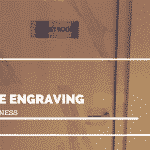
Difference between Conventional acrylic sign and injection molding acrylic signage denture
Objective:
The aim of this study was contrasting the adherence of yeast albicans to the conventional acrylic sign and injection molding acrylic signage denture base materials.
Materials as well as Approach:
Twenty injection molding and 20 traditional pressure pack acrylic discs (10 × 10 × 2 mm) were prepared according to their supplier’s guidelines. Quickly prior to the research, samples were positioned in sterile water for 3 days to eliminate recurring monomers. The examples were after that sanitized utilizing an ultraviolet light unit for 10 minutes. 1 × 108 Cfu/ml suspension of candida albicans ATCC-10231 was prepared from 48 h cultured organism on sabouraud dextrose agar plates incubated at 37oC. 100 μL of this suspension was positioned on the surface of each disk. After being incubated at 37oC for 1 hour, the examples were washed with normal saline to get rid of non-adherent cells. Connected cells were counted making use of the swarm count method after drinking at 3000 rmp for 20 secs. Finally, each group was evaluated for 108 times and also the data were statistically examined by t-test.
Results:
Quantitative analysis exposed that differences in nest count average of yeast infection albicans adherence to conventional acrylic signage denture materials (8.3 × 103) comparing to shot molding acrylic signage denture resins (6 × 103) were statistically substantial (p< 0.001).
Verdict:
Significant reduction of candida albicans adherence to the injection acrylic material materials makes them important for individuals with high threat of acrylic signage denture stomatitis.
Keywords: Yeast infection albicans, Polymer Resins, Denture
Most likely to:
Intro
Acrylic signage denture -induced stomatitis is a typical infection in total or partial denture users. Depending upon the degree and seriousness of the infection, it is identified in 3 types. Kind I is a localized simple inflammation or identify hyperemia. While in kind II, the erythematous location involves a part of or the entire surface of the denture covered mucosa. Kind III is a combination of type I as well as II in addition to a granular inflammatory hyperplasia which normally entails the midline of the difficult taste and also alveolar ridges. [1]
Among several etiological and predisposing variables, yeast types are thought to play a vital role in initiation and development of this infection. [2] The impact surface area of a maxillary denture specifically might be a typical tank for microbes. Candida albicans is the most crucial and also primary dental fungal microorganism. It has the capability to adhere and also multiply on both soft as well as hard cells, developing complicated biofilm frameworks. [3] This relies on preliminary attachment to the denture impact surface area, which consequently relies on physical homes of the material surface area such as porosity, surface area free power, hydrophobicity, [4] as well as roughness. [5] These variables are all influenced by type of the materials made use of in preparing dentures, their polymerization technique, and any kind of surface area modifications in firm of fibers or surface layer. [6]
Injection molding acrylic signage denture are amongst most prominent denture base products these days. It is less tiresome and less susceptible to errors in contrast with standard compression molding. Good dimensional security and ideal cells adaption are other benefits of this method. [7] According to the manufacturing facility assertion, these product show less plaque attachment; as a result, less denture caused stomatitis is possible in patients wearing dentures constructed from shot molding materials. This research was designed to review Yeast infection albicans adherence of injection molding resins in comparison with traditional stress pack ones.






